The OnePlus 7 Pro Review: Outstanding Performance & Screen, Adequate Everything Else
by Andrei Frumusanu on June 19, 2019 12:00 PM EST- Posted in
- Mobile
- Smartphones
- OnePlus
- OnePlus 7 Pro
Camera - Low Light Evaluation
One of the purported advantages of the IMX586 is that it’s able to achieve 4:1 pixel binning in its 12MP capture mode. This means that in effect the pixel pitch in terms of light capture ability ends up at 1.6µm – which is an increase and advantage over last year’s 6T’s 1.22µm module and even 1.4µm modules from the traditional sensor size crowd such as Samsung, LG, Apple and Google.
Again, what will be interesting in this comparison from a competitive stand-point is how the Honor 20 Pro and Oppo Reno stand up against the OnePlus 7 Pro as we can directly analyse whose software processing algorithms are superior.
As aforementioned, the OP7Pro night shots were done on the new 9.7.7 firmware which includes a new update and improved Nightscape low-light capture mode, which did improve things a lot compared to the release firmware.
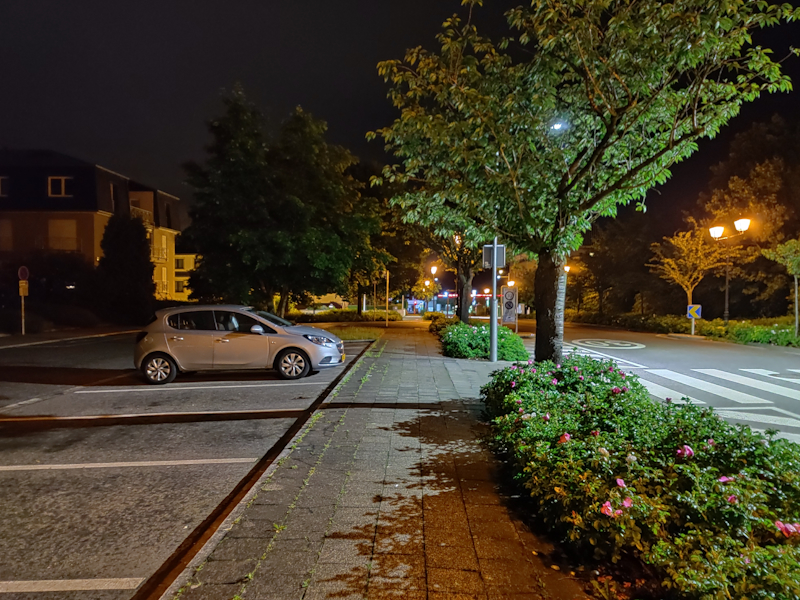
[ OnePlus 7 Pro ] - [ OnePlus 6T ]
[ S10+ (E) ] - [ S10+ (S) ]
[ P30 Pro ] - [ Honor 20 Pro ]
[ G8 ] - [ Oppo Reno ]
[ Pixel 3 ] - [ Pixel 3a ] - [ iPhone XS ]
In the auto mode, I have a very hard time to understand what’s happening to the OP7Pro here. The results are quite outright terrible and the phone is posting significantly washed out textures compared to what the Oppo Reno and the H20Pro are able to get. OnePlus here prioritised too much on having a longer exposure rather than higher ISO levels, so even though both the OP7Pro and the Reno both have similar resulting brightness levels, the Reno is massively sharper. The H20Pro is also far ahead, but granted the phone has a big advantage with its f/1.4 aperture lens. In Auto mode this is actually a downgrade from what the 6T was able to achieve.
Turning on Night mode notably improves things, however it’s not sufficient to compete with the top low-light performers. The Reno’s Night mode, while a bit flat, does significantly better in terms of detail and is a lot sharper. Google, Huawei and now Samsung remain as the top perfomers.
The OP7Pro’s wide-angle here was just a disaster and it didn’t focus correctly. Unfortunately OnePlus doesn’t yet offer Nightscape mode for the wide-angle module, and thus it’s far behind Huawei and Samsung in such shots.
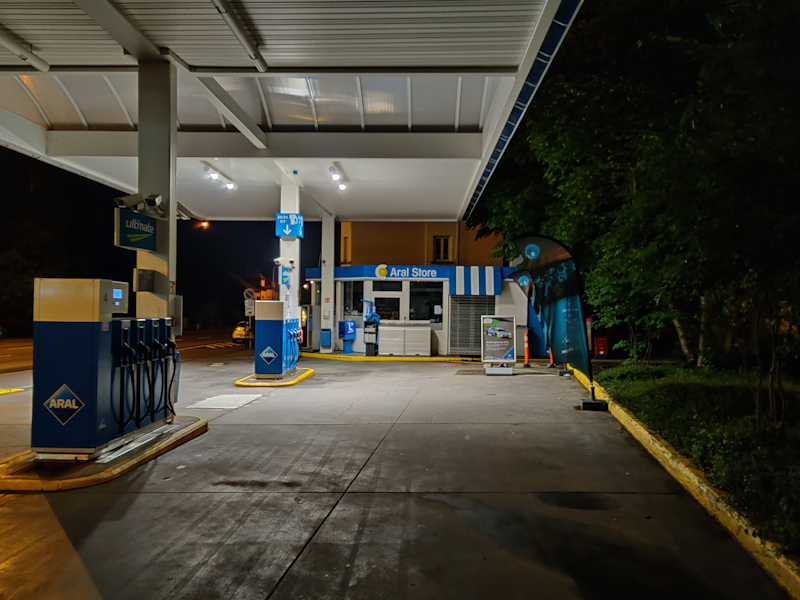
[ OnePlus 7 Pro ] - [ OnePlus 6T ]
[ S10+ (E) ] - [ S10+ (S) ]
[ P30 Pro ] - [ Honor 20 Pro ]
[ G8 ] - [ Oppo Reno ]
[ Pixel 3 ] - [ Pixel 3a ] - [ iPhone XS ]
Here while OnePlus was able to improve on the sometimes comical results of the 6T’s Nightscape processing as seen here, it’s still only good enough for a thumbnail as under closer inspection we see that the phone continues to lag behind other vendors. As seen in the 7 shots, whilst the night mode does brighten things up, it actually severely blurs out elements that were well lit.
The wide-angle continues to be uncompetitive.
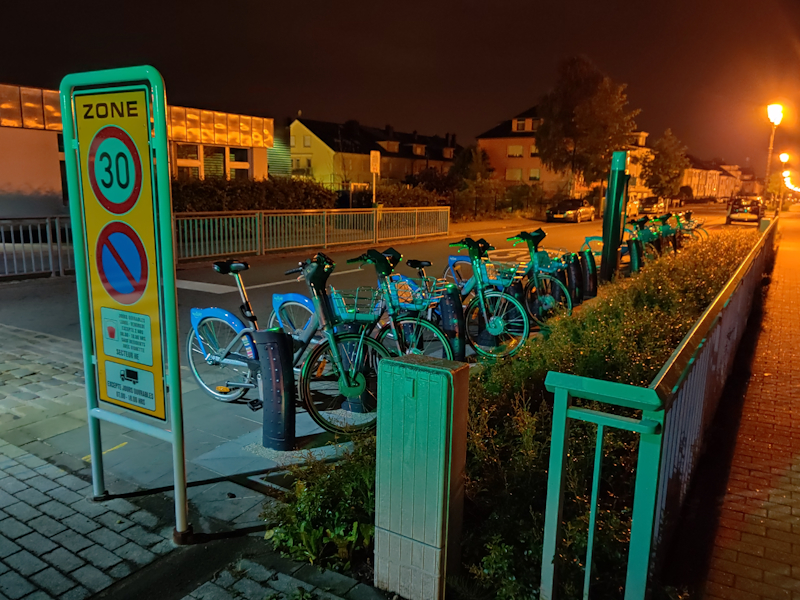
[ OnePlus 7 Pro ] - [ OnePlus 6T ]
[ S10+ (E) ] - [ S10+ (S) ]
[ P30 Pro ] - [ Honor 20 Pro ]
[ G8 ] - [ Oppo Reno ]
[ Pixel 3 ] - [ Pixel 3a ] - [ iPhone XS ]
When going dark and darker in scenes, we actually see that sometimes the Nightscape mode does improve some aspects, but again there’s a big compromise, as seen in this shot the text on the traffic sign is completely blurred out, while it was reasonably good in the auto mode.
The wide-angle is bad.
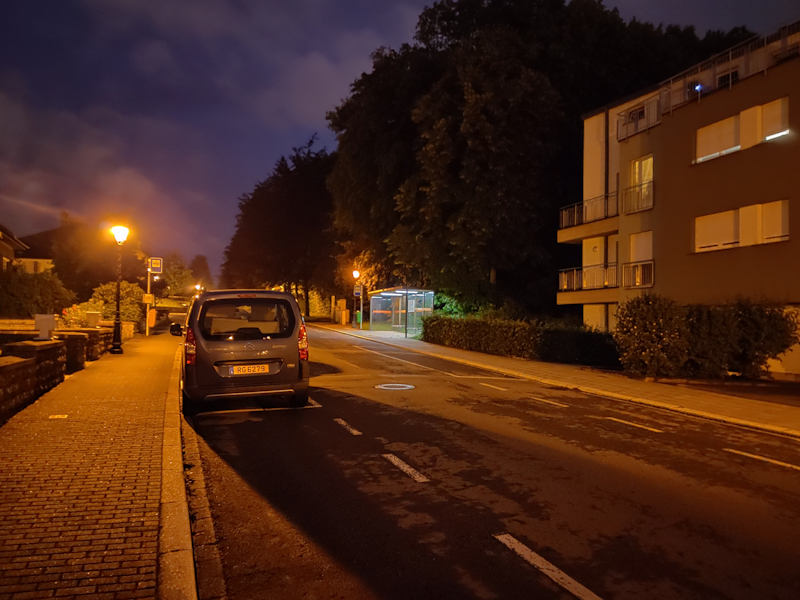
[ OnePlus 7 Pro ] - [ OnePlus 6T ]
[ S10+ (E) ] - [ S10+ (S) ]
[ P30 Pro ] - [ Honor 20 Pro ]
[ G8 ] - [ Oppo Reno ]
[ Pixel 3 ] - [ Pixel 3a ] - [ iPhone XS ]
We continue with bad results; here yet again while the Nightscape mode is able to brighten things up a lot, we again see large degradations in the better exposed parts of the scene such as the pavement.
The wide-angle is having a hard time to capture much.

[ OnePlus 7 Pro ] - [ OnePlus 6T ]
[ S10+ (E) ] - [ S10+ (S) ]
[ P30 Pro ] - [ Honor 20 Pro ]
[ G8 ] - [ Oppo Reno ]
[ Pixel 3 ] - [ Pixel 3a ] - [ iPhone XS ]
It’s only in effectively uniformly dark scenes where one can say the Nightscape mode is actually a no-compromise improvement over the auto mode. Here the OnePlus 7 Pro showcases much better results than the previous generation 6T.
Unfortunately that’s not enough for the latest generation phones as well as the new software updates from the competition. While the 7Pro is competitive against the Snapdragon S10 with the original low-light mode, Samsung’s new Night mode as seen in the Exynos shot above is leaps ahead of OnePlus.
The wide-angle is effectively blind here.
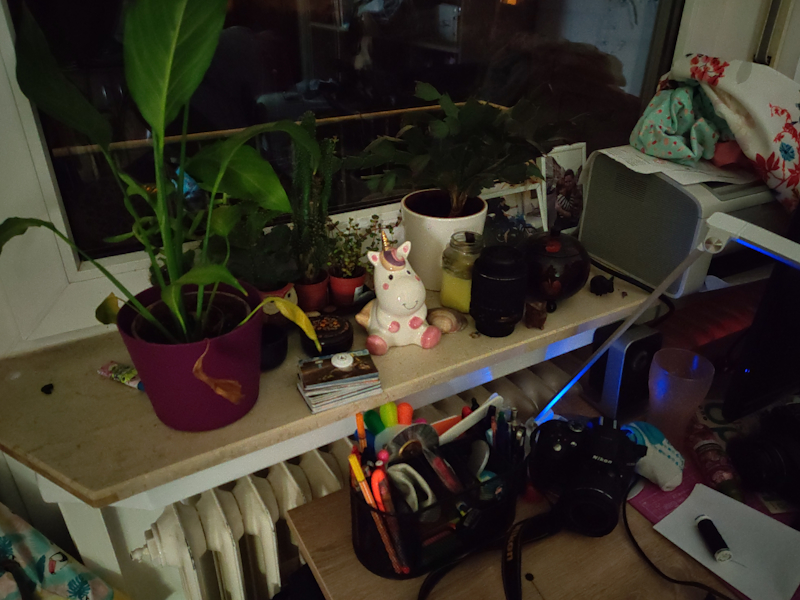
[ OnePlus 7 Pro ] - [ OnePlus 6T ]
[ S10+ (E) ] - [ S10+ (S) ]
[ P30 Pro ] - [ Honor 20 Pro ]
[ G8 ] - [ Oppo Reno ]
[ Pixel 3 ] - [ Pixel 3a ] - [ iPhone XS ]
This last scene largely mimics the last shots, again while the OP7Pro would have been competitive against the S10’s original low-light mode, it can’t compete against the new improved variant.
Overall Low-Light Capture Conclusion – A Big Disappointment
It’s very much unfortunate that OnePlus wasn’t able to invest more efforts into its computational photography. Even with the very latest firmware update we’ve used here the phone simply has massive issues under low light. There are some shots we’ve seen today which do point out what some of the issues are with OnePlus Nightscape mode: Unlike Huawei’s, Google’s and now Samsung’s Night modes, it doesn’t just selectively stack areas for photo exposures, and instead does the whole frame, and it’s not able to correctly stack sections to as to avoid blurring. In effect the Nightscape mode should be good on a tri-pod, but it’s not competitive in hand-held mode.
This is solely something that OnePlus has to fix, as Honor and Oppo showcase it’s possible to achieve good results with the very same hardware sensor.










91 Comments
View All Comments
zodiacfml - Thursday, June 20, 2019 - link
Additionally, it is essentially heat that hurts batteries regardless of charging rates. One PLus' implementation of rapid charging might be less harmful or the same as other fast charging techniquescha0z_ - Monday, July 1, 2019 - link
Correct and at the same time wrong. Yes, heat degrades batteries faster, but it's not the only factor. How fast you put charge in the battery also leads to degradation. Enough materials on the web to explain in details - google it.ZoZo - Wednesday, June 19, 2019 - link
I bought that phone, tested it for about 30 minutes, then sent it back.The curved display is just not for me, especially because they made it so much more curved than on Samsung phones.
1. Things tend to "fall off" the edges and give the impression that the screen is too narrow, it's annoying.
2. Colors are shifted on the edges, especially if you don't hold the phone exactly parallel to your eyes. White appears grayish green.
3. Glare is more frequent as light can be reflected not only from the front of the display, but also from its sides.
What a waste.
ZoZo - Wednesday, June 19, 2019 - link
I'll just add that I don't understand how most reviewers overlooked these problems. Is it just me?RSAUser - Wednesday, June 19, 2019 - link
Nope, I hate pretty much all curves besides 2.5D since it makes it easier to grip, but it doesn't mean the image display itself has to be curved.GC2:CS - Wednesday, June 19, 2019 - link
It is good to know that this phone does come with compromises built in, unlike some other sites that make you believe that this phone (like the phone released a week ago) is going to change the whole industry, just because it is cheap.Some points
1. Do you have some power measurements at peak sustained power or it has been done before ?
-> Am I the only one who thinks that increasing performance on mobile, by implementing heat pipes, coper plates and fans, and run it all as hot as possible is just ridiculous ?!?
2. This device supposedly comes without display lamination ! Can someone confirm/deny ? OLED's will get destroyed when exposed to humidity.
3. Regarding high refresh rates, we really need an Apple implementation- custom T-CON, GPU regulating the refresh and continuously variable refresh rate in a wide range (like 24-120 fps) to save energy. To my knowledge this is possible thanks to IGZO backplane iPad pro uses. And no OLED panel is using that yet. Is there a compatibility problem ?
martixy - Wednesday, June 19, 2019 - link
I could not care less about the camera and the rest looks like an amazing package(bar lack of 3.5mm), but this is a skip for me because WiFi 6 is on the horizon and I'm going all in when it arrives.Flunk - Wednesday, June 19, 2019 - link
If I was looking for a new phone right now, this would be the obvious one (I love my OnePlus 5T), but it looks like the price has creeped up to near top-end pricing. Not only that, but OnePlus seems to realize that too with the OnePlus 7 and 7 Pro. Unfortunately the 7 is not available in my market, which is very frustrating. I'd have to pay for a battery-sapping screen and 2 additional novelty cameras that I'd never use.All in, if I broke my current phone tomorrow I'd have to go on a hunt for my new phone instead of just going back to OnePlus because this phone is just too expensive and it's only too expensive because of those gimmicks.
syxbit - Wednesday, June 19, 2019 - link
>>This is not only because it’s OnePlus’ first ever 1440p screen which is a great improvement in sharpness,Can you tell the difference between 1080p and 1440p on a 6" device?
Andrei Frumusanu - Wednesday, June 19, 2019 - link
Yes, very much.